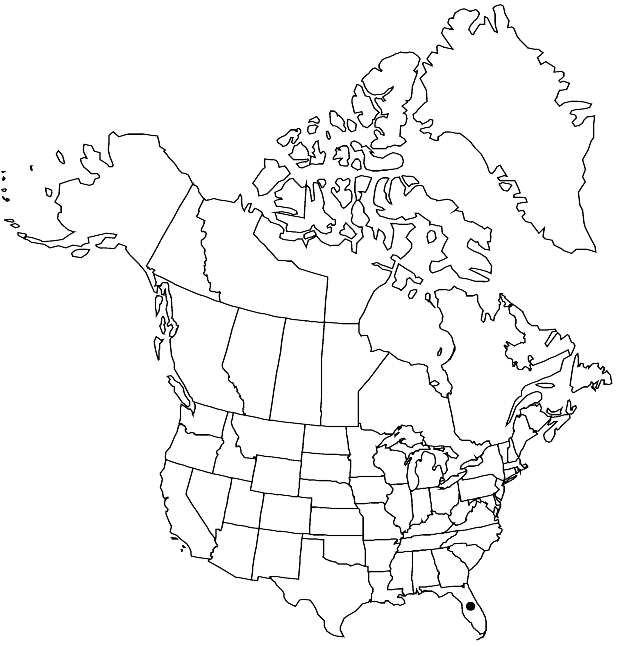Warea amplexifolia
J. Acad. Nat. Sci. Philadelphia 7: 83. 1834.
Stems 3.5–7 (–8) dm. Cauline leaves sessile; leaf-blades ovate, oblong, to lanceolate, (1–) 1.5–4 cm × 4–14 (–16) mm, base always clasping stem, amplexicaul to strongly auriculate (auricles ovate, 3–9 × 2–6 mm), apex acute to obtuse. Racemes 1–5 (–8) cm in fruit. Fruiting pedicels 8–15 mm. Flowers: sepals white or pinkish, spreading or strongly reflexed, 5–8 × 0.4–0.6 mm; petals white, pink, or purple, broadly obovate to orbicular, 7–10 mm, blade 3–5 × 2–4 mm, claw 4–5 mm, minutely papillate, margins entire; filaments 12–15 mm; anthers 1–1.5 mm; gynophore slender, (8–) 10–15 mm. Fruits (3–) 4–7 cm × 1.3–1.5 mm; ovules 24–32 per ovary. Seeds 1–1.5 × 0.6–0.8 mm.
Phenology: Flowering Aug–Sep.
Habitat: Sandy areas, woods, oak scrub, pine barrens
Elevation: 0-50 m
Discussion
Of conservation concern.
Warea amplexifolia is known from Lake, Orange, Osceola, and Polk counties. It is in the Center for Plant Conservation’s National Collection of Endangered Plants.
Selected References
None.
Lower Taxa
"elongated" is not a number."thick" is not a number."dm" is not declared as a valid unit of measurement for this property."dm" is not declared as a valid unit of measurement for this property.
